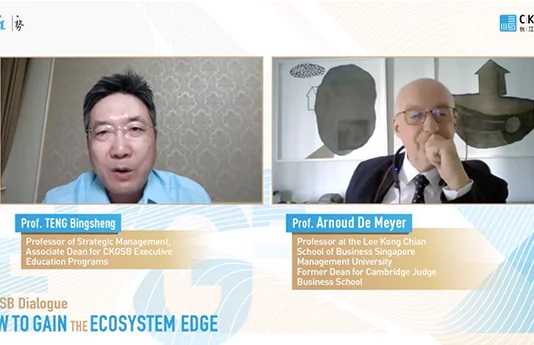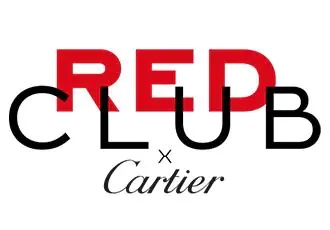In a high-growth environment, building the right culture is tougher than you think. The third article in our series on hypergrowth will show you how to go about building your company’s culture when everything is moving at a dizzying pace. For the other articles in this series, click here
A lot of things must go right for a company to succeed. The right offer, the right niche, the right level of capital, the right leadership and the right kind of employees–the list goes on and on.
Frequently overlooked in that crush of number one priorities is culture, although getting the culture right is arguably at least as crucial. James Heskett, a professor emeritus at Harvard Business School and author of The Culture Cycle, estimates that as much as half of the differences in operating profit between companies are due to cultural differences.
“Like intellectual capital, like human capital, culture is a true competitive advantage. But like anything, most senior leaders are so preoccupied with the day to day operation, culture tends to be paid lip service,” says Shalom Saada Saar, Professor of Managerial Practice at Cheung Kong Graduate School of Business and Senior Instructor, MIT.
Victorious but Vulnerable
Ironically, fast-growing firms–arguably the healthiest firms of all–may be particularly at risk. “Fast growth has an inverse relationship to culture building: you don’t have time to think, you don’t have time to plan,” explains Saar.
Unfortunately, the ‘soft’ issue of culture is hard to get right. Successful start-ups don’t have cultural problems as a rule, according to Heskett: if they do, they’re dead. “If you have a culture problem in a start-up, you’re not going to make it, that’s all,” he says.
Corporate culture experts say managers should start to worry about how to pass on their company’s culture right about when they hire their 60th employee. “You know it because it’s the day when you don’t know everyone’s name. It’s the day you walk in and there’s this person working in the company and you’re like, ‘Who’s that?’ And they’re like, ‘Well, that’s our new vice-president or assistant of or supervisor for…’, and you’re like, ‘Whoa! Man, I don’t know everybody any more’. And that’s when the culture starts to leak,” says Verne Harnish, president of Gazelles, a Virginia-based executive education firm that focuses on small and medium company growth (to read the full interview with Harnish, click here).
Fast growth can make it easy for the company to deceive itself about the quality of the company’s culture. “Growth covers up bad management, especially those who make their numbers but can’t manage by the values of the organization,” says Heskett, in a telephone interview.
Growth can also exacerbate problems. Applicants often tend to be more eager to join a booming company, making them less careful in deciding whether they will fit in, Heskett says. With so much work to be done, hiring decisions tend to be made more quickly too, and less time is spent with the candidate discussing the core values of the company and the pros and cons of the job. Training and orientation are given the short shrift, and new hires are placed less where they might fit best than where the need is greatest.
Not many companies make the grade. In its 2011 Global Talent Management Leadership IQ Study, Leadership IQ, a management consultancy, estimates that only 19% of employees in the US say they are highly engaged. The situation is even worse in China, and only 6% of Chinese companies reported highly-engaged cultures.
Getting Culture Right
So how do you get it right?
Instilling a culture tends to require ongoing work, particularly as the company grows and more layers of management separate the founder from the mass of the employees, experts say.
One common thread of successful companies with strong cultures is that they begin with a very clear vision of themselves, according to Heskett. “Typically, founders who create very successful organizations have clear and relatively simple visions and ideas of how an organization needs to achieve an objective,” he says. Google’s founders, for example, wanted to organize and make available the world’s information, and at the same time do no harm.
Even as the company grows, companies with strong cultures tend to find ways to stay true to those roots, and act consistently with them. In Culture Cycle, Heskett notes that at the Walmart headquarters in Bentonville, Arkansas, for instance, the culture is reinforced with a running ticker that estimates the amount of money the discount giant has saved consumers since its founding.
What else should a company concerned about its culture do?
Hire slowly. Southwest Airlines, a highly successful US discount airline, limits its headcount growth to 14% a year, Heskett notes. Another company, Zappos, a US online shoe company now owned by Amazon, offers its trainees a $2,000 bonus to quit, figuring it’s cheaper in the long run to pay off unengaged employees to walk away than to keep them.
“At Zappos, our belief is that if you get the culture right, most of the other stuff—like great customer service, or building a great long-term brand, or passionate employees and customers—will happen naturally on its own,” CEO Tony Hsieh explained in a recent blog.
Reinforce the message. Yu Gang, CEO of Yihaodian, schedules regular customer satisfaction surveys, and links company-wide improvements to company-wide bonuses. On a smaller scale, Harnish suggests that line managers make sure that praise or criticism always ties back to a company value.
Spend on talent. Replacing employees is expensive. “Don’t forget to continue to allocate resources to keep the talent that you have,” Heskett says.
Watch the metrics. Heskett says the two most important metrics to follow are retention and customer referrals. If employees aren’t jumping ship and customers are referring you to other customers, you’re probably doing something right.
Where the Twain Meet
But one size does not fit all. Cultures vary, Saar says, depending on what they make. For example, the needs of an oil giant like Sinopec are different from a white goods manufacturer like Haier.
Some of the Western academic literature would suggest that Chinese companies might have a Confucian dividend when it comes to building their corporate culture. However, Saar disagrees. East or West, the process of corporate culture-building tends to be roughly the same, he says.
However, Saar argues that it’s actually easier to build a corporate culture in China than the West. Not because of any predisposition towards a particular cultural path (he says he has seen no evidence that Chinese companies tend to follow any special pattern, such as being more Confucian or Daoist), but because Chinese employees tend to be more trusting than their Western counterparts. “Westerners tend to be cynical. Google and Apple are really the exceptions to the norm,” Saar says.
The bigger challenge may be between generations. Grant McCracken, author of Chief Culture Officer notes that Western baby boomers and millennials tend to treat their workplace in different ways. Boomers are usually the same person at work and away from work. But millennials often have several selves, and even secret selves.
Sometimes, the secret selves show. McCracken says, “A millennial in the boardroom dressed in the corporate mufti will reach for something, and as the sleeve pulls up you’ll see a dragon tattoo. You can see people around the table thinking, who is this person?”
Such glimpses make it clear that the young person has a second identity, says McCracken, who argues that rather than hide these differences, it makes more sense for the company to build a culture that tries to take advantage of the millennials’ experience outside the corporation. Without that effort, corporate culture is likely to become harder and harder to instill. As average job tenure declines, social media use rises, and more and more workers operate in relatively flat organizations or as contractors, creating a productive culture may be increasingly difficult.
“It was way, way easier in the old days,” McCracken says.
(Image courtesy: Flickr @ Charmingman)




















